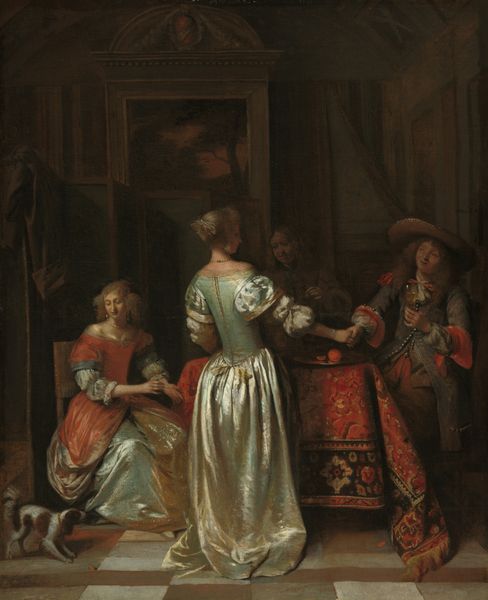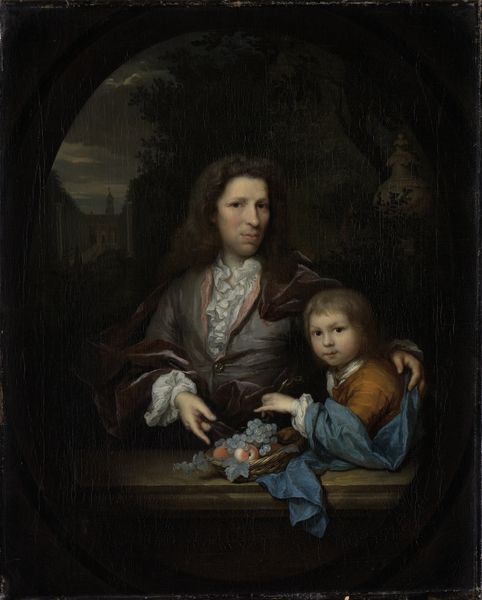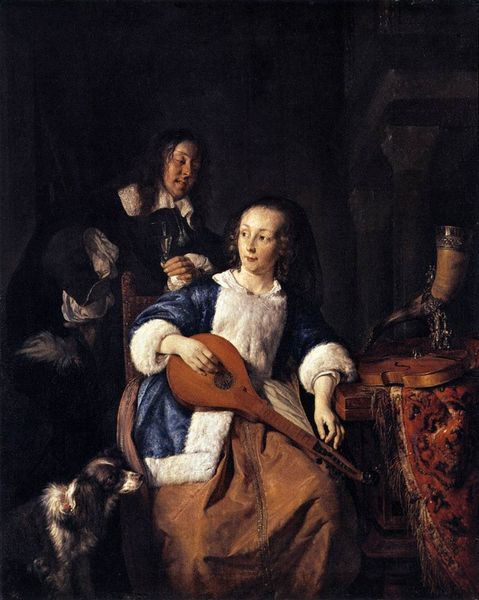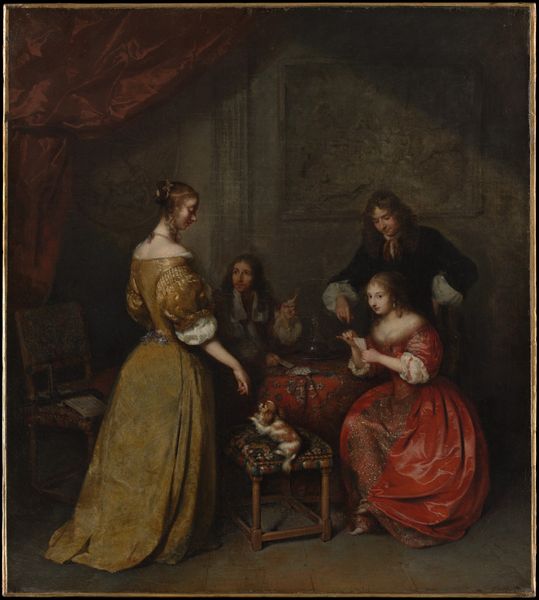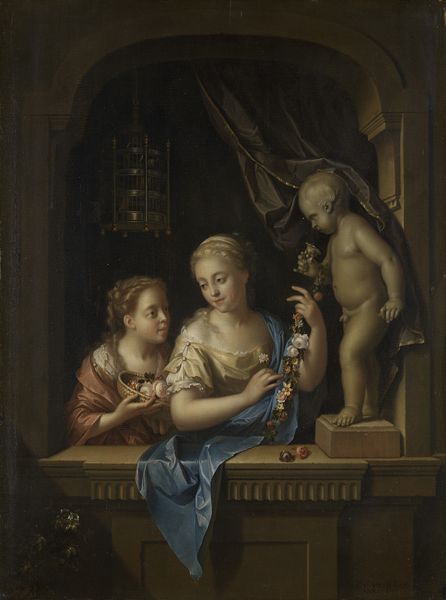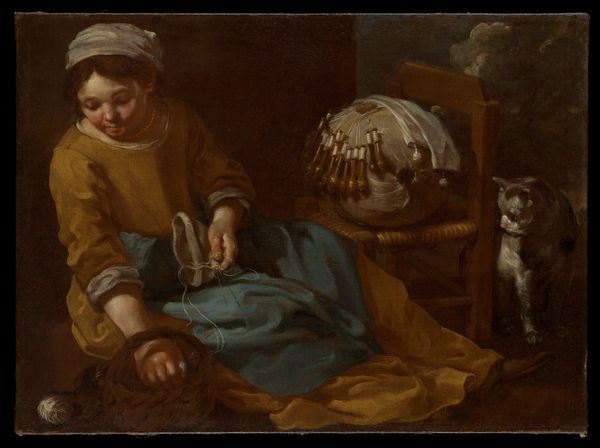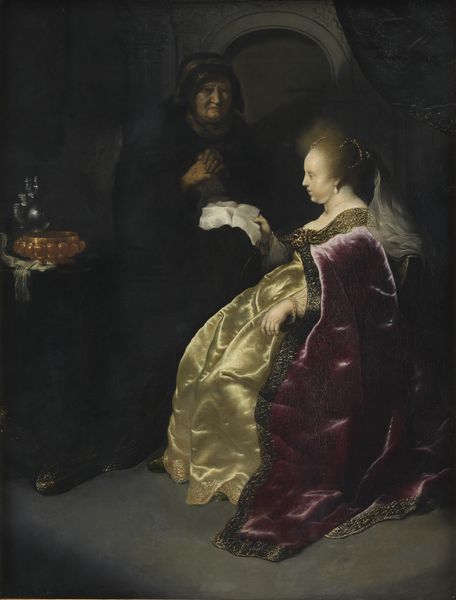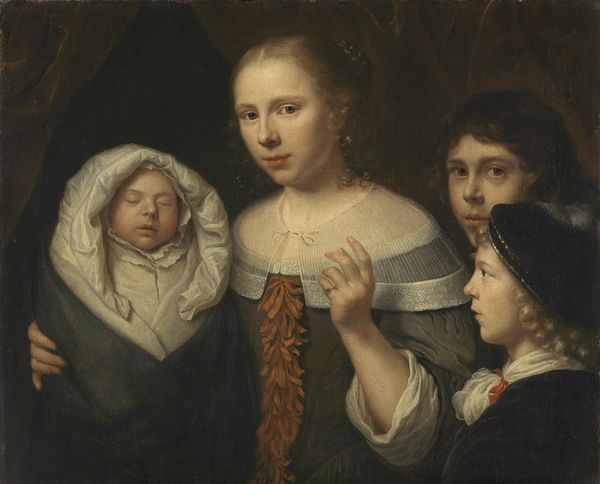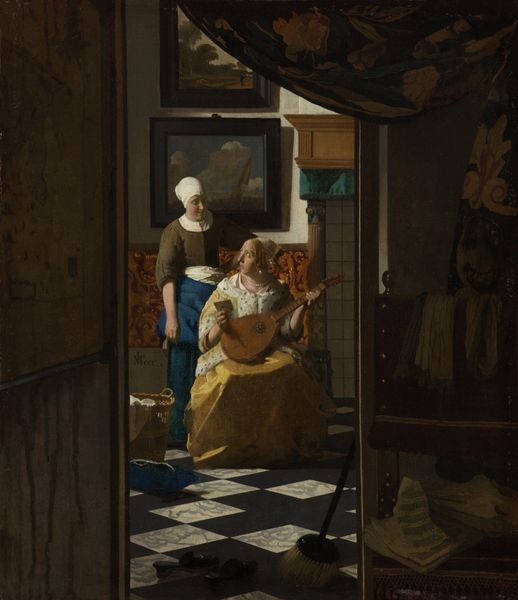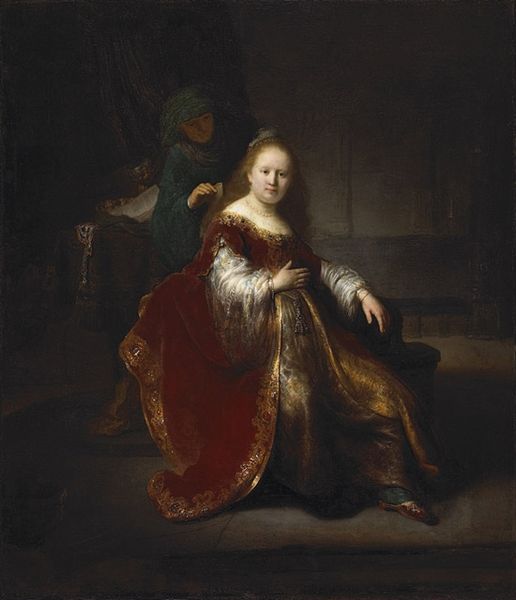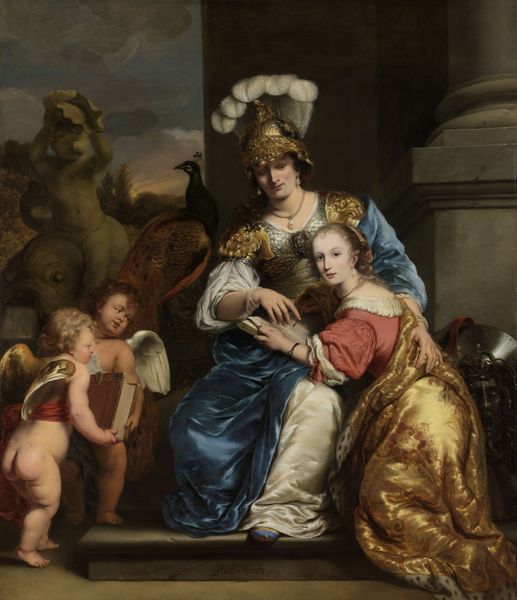
Interior with a Mother Combing her Child’s Hair, Known as ‘Maternal Care’ 1669
0:00
0:00
casparnetscher
Rijksmuseum
oil-paint
#
portrait
#
dutch-golden-age
#
oil-paint
#
intimism
#
genre-painting
Dimensions: height 44.5 cm, width 38 cm, height 61 cm, width 53.5 cm, thickness 4.7 cm
Copyright: Rijks Museum: Open Domain
Curator: We're looking at “Interior with a Mother Combing her Child’s Hair, Known as ‘Maternal Care’” a 1669 oil painting by Caspar Netscher, here in the Rijksmuseum. Curator: It exudes an immediate sense of domestic tranquility. Note the arrangement – a pyramidal structure with the mother and child at its apex, balanced by softer forms: a distant serving woman, and even a cat! Curator: It’s fascinating how Netscher constructs a very particular vision of motherhood here, particularly for the Dutch Golden Age. This wasn't simply about depicting a scene; it was reinforcing societal roles and expectations. We're looking at a construction of femininity through the lens of domesticity. Curator: Absolutely. Observe the textures – the sheen of the mother’s satin skirt against the softness of the fur trim. Netscher's application of light defines form and adds tactile values to the scene, creating an intimate experience for the viewer. Curator: It's worth considering how intimacy is coded here. Whose gaze are we invited to share? How does this “care” perform ideas of Dutch propriety and class distinctions during a period of immense social change? The serving woman in the background particularly piques my interest. Her social position grants her no agency in this display of bourgeois intimacy, as we, the viewer, passively surveil her from our position outside of the “domestic tableau.” Curator: A fair reading. Still, focus on how Netscher uses color! The deep blues of the mother’s jacket contrast beautifully with the muted golds and browns of the interior, guiding the viewer’s eye through the painting and settling on that focal point: the delicate moment of connection between mother and child. The whole design supports this! Curator: It's undeniably beautiful, and the artistic skill is evident, but let’s also be critical of the stories these images tell. Representations like these helped solidify very rigid ideas about women's roles and class structures, ideas with long shadows that extend even to our own time. Curator: I appreciate you adding that layer, though I find joy in the formal beauty here; the painterly textures, harmonious compositions and deft coloring creates an image, and feeling, that transcends the explicit social narratives. Curator: Indeed. Netscher’s technique remains undeniably remarkable and the picture successfully preserves one facet of Dutch life during a complex and crucial time in European history.
Comments
rijksmuseum about 2 years ago
⋮
An elegantly dressed woman combs the long, curly locks of her son. In the background a maidservant enters the room carrying a pitcher of water. She looks sternly at the little girl sticking out her tongue in a mirror. Netscher emphasizes the importance of good upbringing. A prudent mother takes this task seriously, assisted by her maidservant.
Join the conversation
Join millions of artists and users on Artera today and experience the ultimate creative platform.
